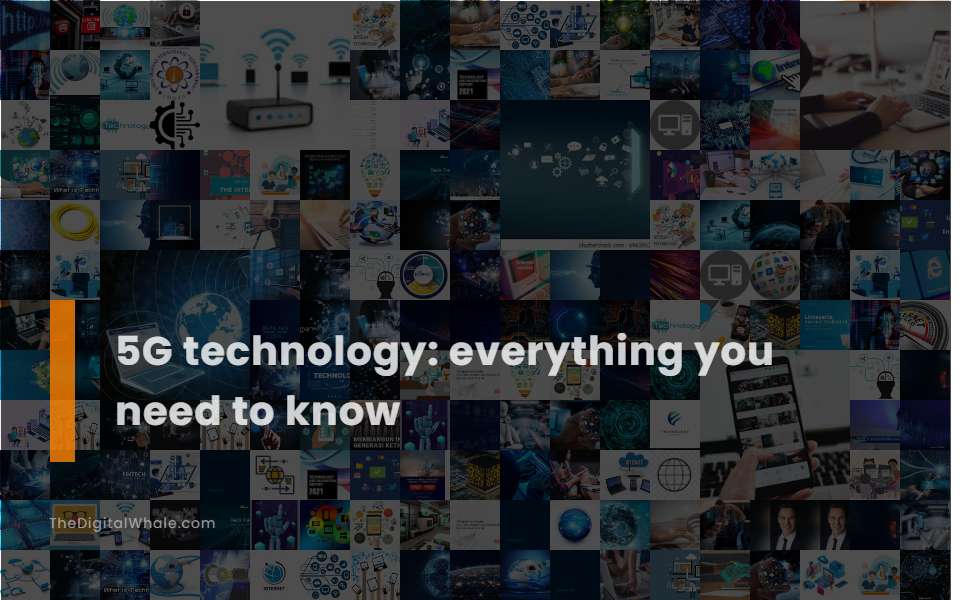5G Technology: Everything You Need To Know
What is the Super-High frequency spectrum? What is the best mobile technology? Let's find out more about 5G Technology: Everything You Need To Know.

Enhanced Data Speeds: Up to 10 Gbps download speeds.
5G technology is designed to deliver download speeds between 10 and 20 Gbps, significantly exceeding 4G speeds, with the potential to reach up to 10 Gbps in optimal conditions, and offering latencies as low as 1 millisecond. For a deeper understanding of these advancements, you can visit Cisco's detailed explanation of 5G Speeds, which explores the transformative implications for various industries and everyday connectivity.
Low Latency: Latency as low as 1 millisecond.
5G Technology significantly reduces latency, bringing it down from 200 milliseconds in 4G networks to as low as 1 millisecond, which is a crucial improvement for real-time applications and IoT devices. For more information, you can visit the Telefónica Blog to learn about the transformative impact of reduced latency in modern networks.
Higher Capacity: Supports more devices without congestion.
5G technology significantly enhances network capacity, allowing it to support a much higher number of connected devices per square mile without congestion. This advancement makes it ideal for dense environments such as hospitals and urban centers, facilitating the growth of Smart Healthcare ecosystems and other IoT applications. For more detailed insights, visit the Impact of 5G on Connected Devices page. As 5G continues to proliferate, it promises to revolutionize how we interact with technology in our everyday lives, providing unprecedented opportunities for innovation and efficiency.
Network Slicing: Customized virtual networks for specific use cases.
Network slicing in 5G technology creates multiple virtual networks on a shared physical network, allowing for customized network resources, security rules, and performance characteristics tailored to specific use cases, such as prioritizing certain applications, ensuring low latency, or supporting high-bandwidth services like IoT and autonomous vehicles. This technique utilizes software-defined networking (SDN) and network function virtualization (NFV) to optimize radio access, improve efficiency, and support diverse service types like Enhanced Mobile Broadband (eMBB), Massive Machine-Type Communications (mMTC), and Ultra-Reliable Low-Latency Communications (URLLC).
Massive MIMO: Uses multiple antennas for improved signal quality and capacity.
Massive MIMO is a 5G technology that uses a large number of antennas at the base station to improve spectral and energy efficiency, enhance cell edge performance, and increase throughput by spatially directing transmissions and utilizing spatial multiplexing and beamforming. Learn more about the intricacies of this technology by visiting the detailed guide on Massive MIMO on the MathWorks website.
Related:
Can you give me an example of how to incentivize employees who purchase new technology? What are some practical ways to help employees adapt to new technology? Let's find out more about Adapting To New Technologies In the Workplace.
Beamforming: Directs signals to specific users, reducing interference.
Beamforming in 5G focuses wireless signals in specific directions towards intended users, reducing interference, improving signal strength and quality, and enhancing network coverage and capacity by minimizing signal overlap and path loss, particularly beneficial with mmWave transmissions. For further insights, visit the detailed explanation on 5G Beamforming to learn more about its impact on modern communication networks.
Millimeter Wave (mmWave) Technology: Provides wider bandwidth and higher data throughput.
5G mmWave technology utilizes frequencies above 24GHz, offering extremely high bandwidth and speeds, ideal for applications requiring ultra-low latency and high data throughput, such as autonomous vehicles, smart cities, and high-speed broadband. Despite its limited range and need for small cell networks to expand coverage, the capabilities of this technology are transformative. For more detailed insights, you can explore the information about 5G mmWave on the Celona website.
Improved Energy Efficiency: Enhanced power management for devices and networks.
5G technology offers improved energy efficiency through several advancements, including the ability to support more connected devices, enable cloud-based technologies, and optimize computing resources, potentially saving up to 21 gigatons of CO2 emissions by 2030. However, it also presents challenges such as increased power requirements, which can be mitigated by using renewable energy, minimizing waste, and optimizing network architecture and power management algorithms. For more insights on how 5G contributes to sustainable connectivity, you can explore the comprehensive article on 5G Energy Efficiency.
Expanded Spectrum: Operates on a broader range of frequencies, including sub-3 GHz to 100 GHz and beyond.
5G technology operates on a wider range of bandwidths, expanding from the sub-3 GHz specification to frequencies up to 100 GHz and greater, enabling increased capacity, throughput, and the ability to connect more devices simultaneously. To learn more about this revolutionary technology, visit the detailed insights on the IBM 5G page, where you can explore how these advancements are reshaping connectivity and the future of communication networks.
Advanced Core Network Architecture: Uses cloud-native, service-based architecture for scalability and flexibility.
The 5G Core network utilizes a cloud-native, service-based architecture (SBA) that enables scalability, flexibility, and efficient deployment. This architecture allows for the independent scaling of network functions, supports network slicing, and enhances capabilities for new services such as edge computing and improved end-to-end security. For more details, visit the 5G Core section on Ericsson's website.
Related:
What's the difference between work-life balance and work-technology balance? Can technology help with work-life balance? Let's find out more about Work-Life Balance and Technology.
